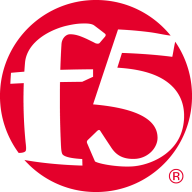

Red Hat Advanced Cluster Security for Kubernetes and NGINX App Protect are both robust security solutions in the cloud-native and application security realm. Red Hat Advanced Cluster Security seems to have the upper hand with its comprehensive features, while NGINX App Protect stands out for its ease of deployment and strong support.
Features: Red Hat Advanced Cluster Security for Kubernetes offers detailed visibility, automated DevSecOps integration, and extensive compliance checks. NGINX App Protect is known for its strong application-layer security, intuitive policy configuration, and efficient threat mitigation.
Room for Improvement: Users of Red Hat Advanced Cluster Security have noted the need for better integrations with third-party tools, improved dashboard performance, and more user-friendly interfaces. NGINX App Protect users suggest enhancements in scaling capabilities, more flexible pricing models, and better documentation.
Ease of Deployment and Customer Service: Red Hat Advanced Cluster Security's deployment can be complex with a notable learning curve, but its customer service is highly rated for responsiveness. NGINX App Protect is recognized for a smoother deployment process and excellent customer support, offering a more seamless implementation experience.
Pricing and ROI: Red Hat Advanced Cluster Security is seen as offering substantial value despite higher costs due to its advanced features and integration capabilities, leading to a strong ROI. NGINX App Protect, while considered expensive, provides a satisfactory ROI due to its effective threat protection and user satisfaction with support services.


NGINX App Protect application security solution combines the efficacy of advanced F5 web application firewall (WAF) technology with the agility and performance of NGINX Plus. The solution runs natively on NGINX Plus and addresses some of the most difficult challenges facing modern DevOps environments:
NGINX App Protect offers:
Red Hat Advanced Cluster Security for Kubernetes is a Kubernetes-native container security solution that enables your organization to more securely build, deploy, and run cloud-native applications from anywhere. With its built-in security across the entire software development life cycle, you can lower your operational costs, reduce operational risk, and increase developer productivity while improving your security posture immediately. In addition, Red Hat Advanced Cluster Security integrates with security tools and DevOps in an effort to help you mitigate threats and enforce security policies that minimize operational risk to your applications. It also enables you to provide developers with actionable, context-rich guidelines integrated into existing workflows, along with tooling to support developer productivity. The solution is suitable for small, medium, and large-sized companies.
Red Hat Advanced Cluster Security for Kubernetes Features
Red Hat Advanced Cluster Security for Kubernetes has many valuable key features. Some of the most useful ones include:
Red Hat Advanced Cluster Security for Kubernetes Benefits
There are many benefits to implementing Red Hat Advanced Cluster Security for Kubernetes. Some of the biggest advantages the solution offers include:
Reviews from Real Users
PeerSpot user Igor K., Owner/Full Stack Software Engineer at Maraphonic, Inc., says, “The solution allows teams to create their own virtual spaces and share resources. The most valuable feature is the ability to share resources.”
We monitor all Container Security reviews to prevent fraudulent reviews and keep review quality high. We do not post reviews by company employees or direct competitors. We validate each review for authenticity via cross-reference with LinkedIn, and personal follow-up with the reviewer when necessary.